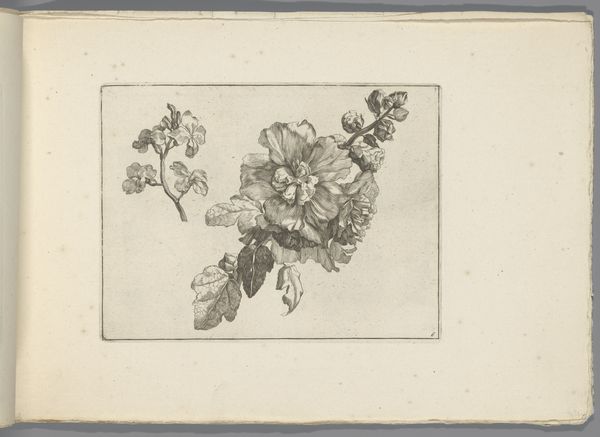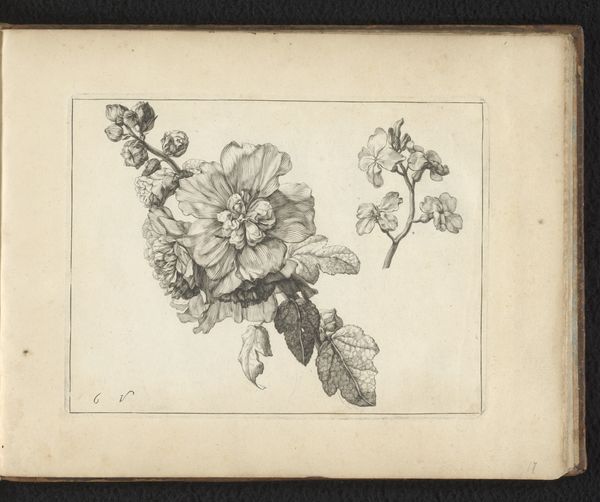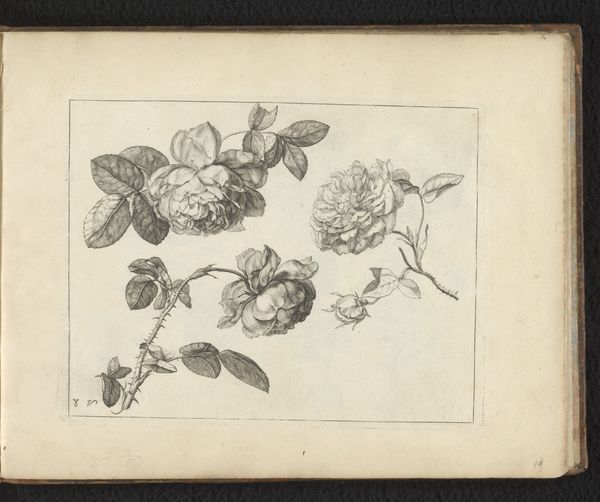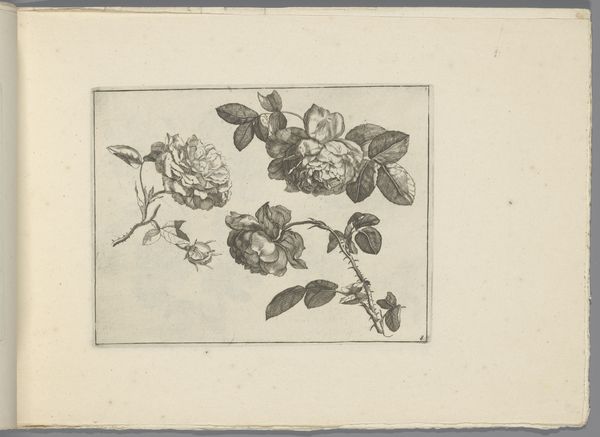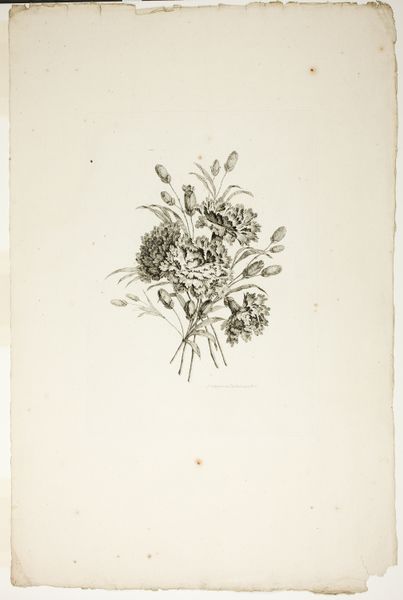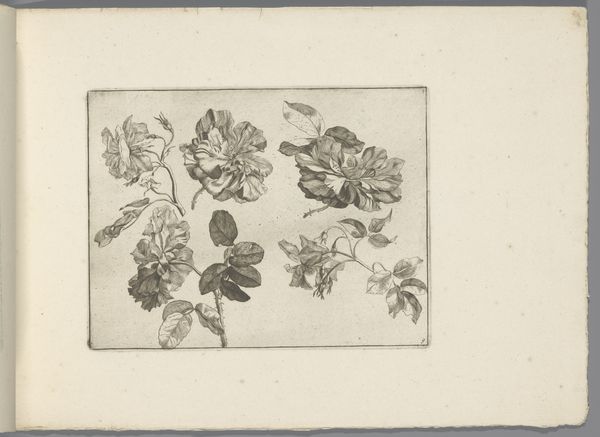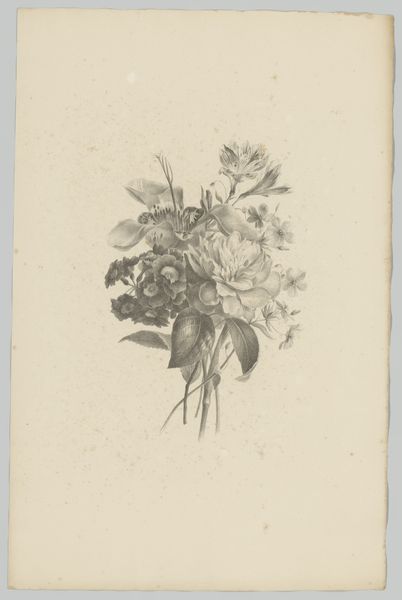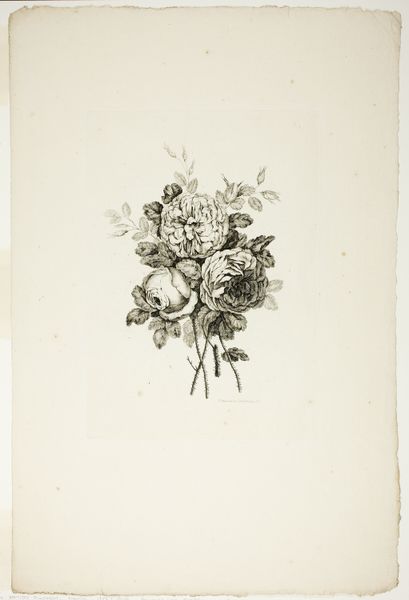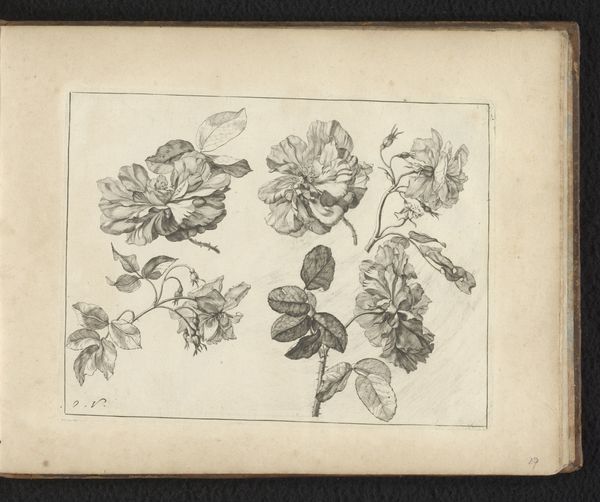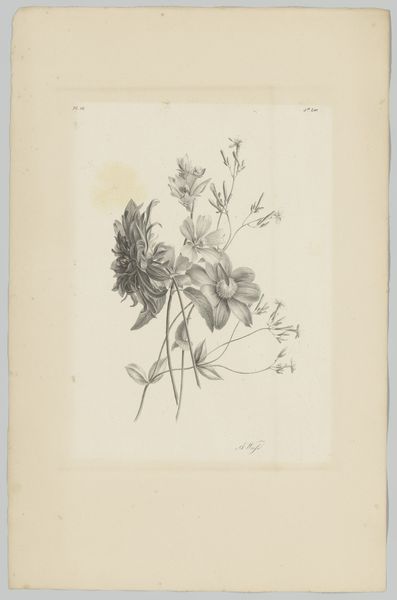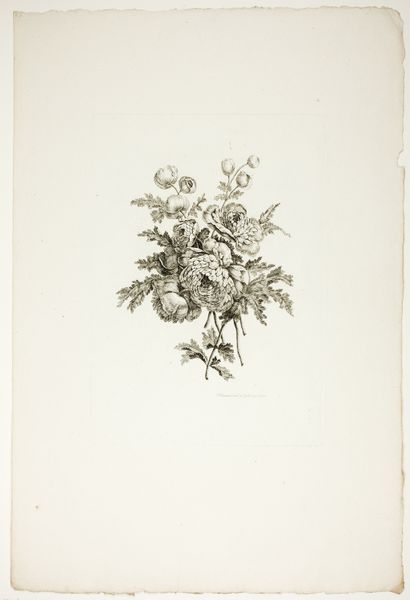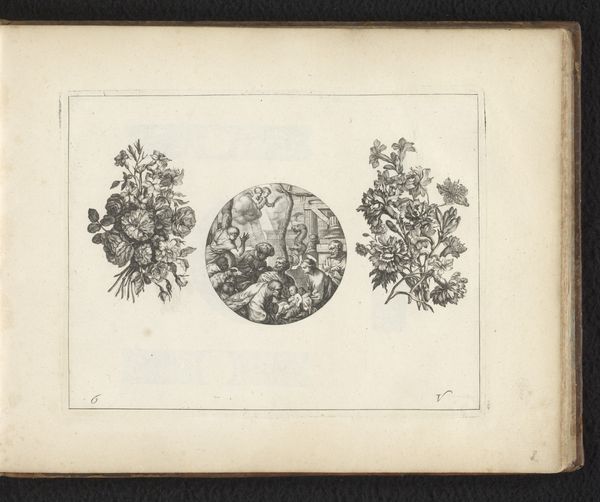
drawing, pencil
#
drawing
#
flower
#
romanticism
#
pencil
Dimensions: height 299 mm, width 439 mm
Copyright: Rijks Museum: Open Domain
Editor: Here we have "Boeket met een roos," or "Bouquet with a Rose," created by Pierre Joseph Redouté around 1818 or 1819. It’s a delicate pencil drawing of a cluster of flowers, and I am immediately drawn to the precision of the botanical rendering, the almost scientific dedication to detail. What does this artwork tell you? Curator: Considering Redouté's time, the Romantic period, it's key to look at the rise of industrialization. Botanical illustration, like this, emerges as almost a counter-response. While factories churned out goods, Redouté meticulously recorded nature, highlighting handmade craftsmanship, and revealing nature's intricate processes, captured using drawing skills that are painstakingly learned and materially intensive in the drawing effort and the time spent to complete this drawing. Editor: That's a fascinating perspective. So, the drawing's medium – pencil on paper – itself speaks to a rejection of mass production? Curator: Exactly. Think about the social context: a growing consumer culture. Here, Redouté offers something of value – not simply as decoration, but through skilled rendering and knowledge of the plant kingdom. He also subtly emphasizes what mass production can not produce, i.e., botanical knowledge and skilled freehand depiction that could reveal intimate detail. Consider, too, the use of pencil itself – readily available, accessible, almost democratic compared to older systems requiring painting on commission from wealthier patrons. The labor is plain, not hidden or gilded. Editor: So the materials and the methods carry the meaning? Curator: In this case, undeniably. It speaks volumes about the artist's values and the context in which it was created, i.e., not as art only for the wealthy to put in their homes. Editor: I never thought about Romantic art from that angle, the rise of materialism, production, consumption. I’m going to think more about these artists' roles as craftspeople pushing back on the system! Curator: Absolutely. It provides a valuable lens for understanding not just this piece but the whole era, considering how even something as simple as a pencil can carry a political message.
Comments
No comments
Be the first to comment and join the conversation on the ultimate creative platform.
